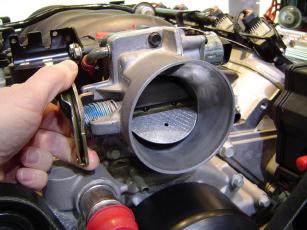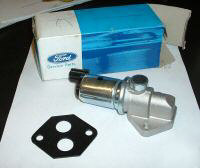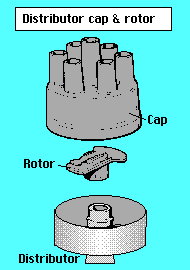
Diagnose Fuel Pump
If the fuel pump is not delivering adequate fuel pressure and volume to the engine, the engine may not start or run properly. Low fuel pressure can cause hard starting, a rough idle, misfiring, hesitation and stalling. No fuel pressure will prevent the engine from starting, or will cause the engine to quit running if the fuel pump fails while driving.
Fuel injected engines are very sensitive to fuel pressure as well as fuel volume. Low pressure will cause starting and driveability problems. A pump that can deliver adequate pressure but not enough volume may allow the engine to start and idle normally, but it will starve the engine for fuel and cause a loss of power when the engine is under load, accelerating hard or cruising at highway speeds.
Engine Cranks But Will Not Start
A dead fuel pump can prevent an engine from starting, but so can a problem with the ignition system or the engine itself (such as a broken timing belt).
The first thing to check would be spark. This can be done by connecting a spark plug tester to a plug wire while the engine is cranking. The tester must be grounded to the engine block for a good electrical connection.
CAUTION: Do not touch any of the spark plug wires while the engine is being cranked or you may get a bad shock!
If an engine has a coil-on-plug ignition system, and it is possible to remove one of the coils, do so and place a spark plug in the end of the coil. Then place the coil and plug so the plug is touching metal on the engine.
If the ignition system is working properly, you should see a series of sparks while cranking the engine. No spark would indicate an ignition problem such as a bad crankshaft position sensor, ignition module or ignition coil.
Next, check the timing belt if the engine has an overhead camshaft and rubber timing belt. The belt is usually enclosed inside a plastic cover on the end of the engine. Removing a couple of screws from the cover and pulling the cover back should allow you to see the belt. If the belt looks okay, and turns when the engine is cranked, compression is probably not your problem. Timing belts can jump time if they loosen up or if the cogs on the underside of the belt become damaged. It's also possible for the overhead camshaft to seize or break if the engine has run low on oil or has overheated. But if the cam gear turns when the engine is cranked, that's probably not the problem either.
CAUTION: Keep your fingers away from the belt and gears while cranking the engine!
If ignition and compression are both OK, that leaves a lack of fuel as the most likely cause of the no start. But is it the fuel pump or something else?
Possible causes of a fuel-related no start include:
1. A dead fuel pump (could be the pump, pump relay pump fuse or a fault in the pump wiring circuit)
2. A plugged fuel filter
3. Low fuel pressure (weak pump, restricted fuel line, low voltage to the pump or a defective fuel pressure regulator)
If the pump runs and generates normal pressure to the engine, but the engine still does not start, the problem may be:
1. No voltage to the fuel injectors (blown injector fuse or bad relay)
2. No pulse signal to the injectors from the PCM (no crank or cam sensor input to the PCM, or a bad driver circuit in the PCM, or a wiring harness problem)
3. A shorted fuel injector (robs voltage from the other injectors so none will operate)

Fuel Pump Checks
One of the first things to check is the fuel pump. Does the pump run when the engine is cranking? The pump should make a little noise. No noise would tell you the pump is not spinning.
On most vehicles the pump is energized by the PCM via a relay. When the ignition key is first turned on, the PCM energizes the fuel pump relay for a couple of seconds so the pump will run to build up pressure. The PCM then shuts off the fuel pump relay (which turns off the pump) if it does not receive an rpm signal from the engine indicating the engine has started after cranking. The pump circuit also may be wired though an oil pressure switch and/or an inertia safety switch that kills the pump in case of an accident. Refer to the wiring diagram to find out what is involved before jumping to any conclusions.
A bad fuel pump relay will prevent the fuel pump from running. Locate the fuel pump relay in the engine compartment (it is usually in the power center). Remove the relay and shake it. If you hear anything rattling inside the relay, the relay is broken and needs to be replaced.
To test the fuel pump, bypass the relay to route power directly to the fuel pump. If the fuel pump runs when the relay is bypassed, the problem is a bad relay or a fault in the wiring circuit that provides power to the relay. Bypassing a relay can be tricky because you have to know which terminals to jump. So before you attempt this procedure, you must look up the fuel pump wiring diagram for your vehicle in a manual or online.
One new tool we found recently (see below) makes bypassing a fuel pump relay much easier and requires no wiring diagrams or jumper wires. The tool is a fuel pump bypass relay. It is a replacement relay that has an ON-OFF rocker switch on top. All you do is replace your fuel pump relay with the test relay, flip the switch to energize the fuel pump and see if the fuel pump runs. If the pump works, the problem is a bad relay. If nothing happens, the problem is a bad fuel pump or a fault in the wiring between the relay and pump. The tool is made by IPAtools and comes in a kit that includes 6 different relays that fit a variety of import and domestic vehicles:
 Fuel pump relay bypass tool allows you to energize and test the fuel pump.
Fuel pump relay bypass tool allows you to energize and test the fuel pump.
Other electrical problems that can affect the pump include low voltage in the pump's power supply circuit or high resistance in the pump's ground connection. Either may prevent the pump from running or spinning fast enough to generate normal fuel pressure.
Measuring Fuel Pump Pressure
Depending on the application, the fuel system may require anywhere from 30 to 80 psi of fuel pressure to start and run. NOTE: Fuel injected engines are VERY sensitive to fuel pressure. If pressure at the engine fuel rail is even a couple pounds less than specifications, the engine may not start or run well, or experience hesitation or stalling problems.
Pressure specifications will vary according to the type of fuel injection system on the engine as well as the performance, fuel economy and emission requirements of that particular model year vehicle. There are no rules of thumb. Every application is different, so always look up the pressure specs when troubleshooting fuel-related performance problems.
When there is too much fuel pressure, the engine runs rich. This causes an increase in fuel consumption and carbon monoxide (CO) emissions. An engine that is running really rich also may experience a rough idle, surging and possibly even carbon-fouled spark plugs.
When there is not enough fuel pressure, the engine may not start. Or if it does, it may idle roughly and run poorly. Low fuel pressure creates a lean fuel condition that can cause lean misfire, hesitation, rough idle, hesitation and misfire on acceleration.
To check fuel pressure, you need a gauge and a place to attach it. There are a number of different checks that can be made, including static or rest pressure (key on, engine off), residual fuel pressure, running pressure, maximum or "dead head" pressure and volume of fuel delivered. The fuel pressure regulator also should be tested, and a fuel pressure drop test performed to check for dirty fuel injectors.
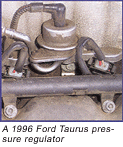
Different vehicle manufacturers recommend different test procedures. On many European EFI systems, the OEMs recommend using a static pressure test with the engine and ignition off. This is done by bypassing the fuel pump relay and energizing the pump directly. Most domestic and Asian vehicle manufacturers, on the other hand, provide a test fitting on the fuel rail so pressure can be checked with the engine running.
If you are working on a vehicle that does not have a pressure test fitting, you will have to tee a pressure gauge into the fuel line just ahead of the injector fuel rail.
Caution: Before hooking up your pressure gauge, relieve all pressure in the fuel system.
Static Fuel Pressure TestWith the key on, engine off (or with the fuel pump energized), fuel pressure should come up quickly and hold steady at a fixed value. Compare the pressure reading to specifications. If you get no pressure reading, check for voltage at the pump. If there is voltage but the pump is not running, you have found the problem: a bad fuel pump.
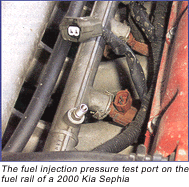
If you do get a pressure reading but the reading is lower than normal, the cause may be a weak pump, a blockage in the fuel line, filter or tank inlet sock, or a faulty pressure regulator. Also, low voltage at the pump may prevent it from spinning fast enough to build up normal pressure. Check the voltage at the pump. If OK, check the fuel filter and lines for obstructions and the operation of the fuel pressure regulator before you condemn the pump.
Residual Fuel Pressure TestWhen the pump is turned off or stops running, the system should hold residual pressure for several minutes (look up the specs to see how much pressure drop is allowed over a given period of time). If pressure drops quickly, the vehicle may have a leaky fuel line, a leaky fuel pump check valve, a leaky fuel pressure regulator or one or more leaky fuel injectors. Low residual fuel pressure can cause hard starting and vapor lock during hot weather.
Running Fuel Pressure TestWith the engine idling, compare the gauge reading to specifications. Fuel pressure should be within the acceptable range given by the vehicle manufacturer. If low, the problem may be a weak pump, low voltage to the pump, a clogged fuel filter, line or inlet sock inside the fuel tank, a bad fuel pressure regulator, or nearly empty fuel tank.
Dead Head PressureThis checks the maximum output pressure of the fuel pump. With the return line pinched shut, the pump should produce two times its normal operating pressure at idle. If the pressure rating does not go up with the return line blocked, the pump may not be able to deliver enough fuel at higher engine speeds. Possible causes include a worn pump, low voltage at the pump, a plugged fuel filter or inlet sock in the tank, an obstructed fuel line or almost empty fuel tank.

Fuel Volume Test
A fuel pump that delivers normal pressure may still cause driveability problems if it can't deliver enough fuel volume to meet the engine's needs. A fuel volume test may therefore be the best way to evaluate the pump's condition.
A fuel volume test measures the volume of fuel delivered over a specified interval. This test can be done by connecting a fuel flow gauge into the fuel supply line, or by disconnecting the fuel return line from the fuel pressure regulator and connecting a hose from the regulator to a large container. Caution: Make sure there are no open sparks or flames nearby while doing this test!
With the engine off, energize the pump and measure the volume of fuel delivered during the specified interval of time. As a rule, a good pump should deliver about 3/4 to one quart of fuel in 30 seconds.
Causes of low fuel volume delivered include a worn fuel pump, a plugged fuel filter or inlet sock in the tank, obstructed fuel line or nearly empty tank. Don't forget that low voltage at the pump can also prevent it from running fast enough to generate adequate fuel flow. The pump's supply voltage should be within half a volt of normal system voltage. If it is low, check the wiring connectors, relay and ground.

Fuel Pressure Regulator Tests
This test checks the operation of the fuel pressure regulator to make sure it changes line pressure in response to changes in engine vacuum. This is necessary to maintain the proper operating pressure behind the injectors and to compensate for changes in engine load.
With the engine running, disconnect the vacuum hose from the pressure regulator. As a rule, fuel system pressure should increase 8 to 10 psi with the line disconnected. No change would indicate a faulty pressure regulator, or a leaky or plugged vacuum line.
Also, when the vacuum hose is disconnected from the regulator, check the inside of the hose for any wetness that would indicate fuel is being sucked into the hose. There should be none. If the inside of the hose is wet, it means the diaphragm inside the regulator is leaking. This will cause a drop in fuel pressure, and allow fuel to be sucked into the intake manifold upsetting the air/fuel mixture. If the diaphragm is leaking, replace the regulator.
Fuel Pressure Drop Test
This test measures the drop in static system fuel pressure when each injector is energized. The amount of pressure drop for each injector is then compared to see if the injectors are dirty and need to be cleaned or replaced. This test requires an "injector pulser" tool to energize the injectors.
To perform this test, turn the key on or energize the fuel pump for a few seconds to build up static pressure in the fuel system. Then turn the key off, pulse one injector for the specified time and note the pressure drop for that injector. Turn the key back on to rebuild static pressure and repeat the test for each of the remaining injectors.
An injector that is pulsed 100 times for five milliseconds should produce a minimum pressure drop of about 1 to 3 psi, and no more than 5 to 7 psi, depending on the application.
The difference in pressure drop between all the injectors should be 2 psi or less. If you see more than 3 psi difference between the highest and lowest readings, the injectors are dirty and need to be cleaned or replaced.
If you see no pressure drop when an injector is energized, the injector is clogged or defective and needs to be replaced. If the pressure gauge needle bounces, the injector is sticking.
After cleaning, repeat the test to see if cleaning did the trick. All injectors should show about the same amount of pressure drop (less than 2 psi difference) and no more than 7 psi drop at 100 pulses for 5 milliseconds. If there is no change in the readings or the drop exceeds these limits, the injector(s) need to be replaced.
Fuel System Scan Tool Checks
If you have a scan tool that can display OBD system data, look for a fuel pressure PID. Compare the fuel pressure reading against specifications to see if it is in range or not. You can also compare the scan tool pressure reading against the actual reading on the vehicle with a gauge to see if they are the same. If the gauge reads higher, the vehicle may have a bad fuel pressure sensor. A low fuel pressure reading would confirm a weak fuel pump, low voltage to the fuel pump or a leaky fuel pressure regulator that does not allow the system to develop and hold normal fuel pressure.
You can also look at Long Term Fuel Trim (LTDT) and Short Trim Fuel Trim (STFT) values to see if the engine is running lean. A normal range is usually plus or minus 8 or less. A STFT value greater than 8 or a LTFT value greater than 10 would tell you the engine is running lean, possibly due to low fuel pressure or a weak fuel pump. Just remember that lean readings can also be caused by engine vacuum leaks and other conditions.
Fuel pumps can also be tested with a professional level scan tool that has bidirectional capabilities. On the scan tool diagnostics menu, there may be an option to run a fuel pump self-test. The test allows you to energize the pump to see if it runs, and to test the operation of a variable speed pulse-modulated pump.
You can also use any scan tool or code reader to pull fuel-related fault codes from the PCM.
Fuel System Scope Tests
By connecting a Low Amps probe to the fuel pump's voltage supply wire, you can view the pump's current waveform on a digital storage oscilloscope (DSO). The scope pattern will reveal internal wear in the brushes and commutator that may not show up in a traditional pressure or volume test.
Observing the waveform will show if the pump's amp draw is normal for the application or is high or low, and if the pump is operating at normal speed or is running slow. Problems such as a bad spot on a commutator or a short or open in the armature also will be obvious in the waveform.
A "good" electric fuel pump waveform will generally seesaw back and forth with relative consistency and minimal variation between the highs and lows. A "bad" waveform will show large or irregular drops in the pattern, with large differences between the highs and lows.
Fuel Pump Replacement
What To Do if the Fuel Pump Checks Out Okay, but the Engine Still Won't Start
If the fuel pump is running and delivering normal pressure to the engine, and the engine has spark and compression, but will not start, the fuel injectors are probably not opening. The PCM uses the trigger signal from the crankshaft position sensor, and/or camshaft position sensor to pulse the injectors. The injectors should receive battery voltage when the key is turned on, and the PCM driver circuit provides the ground connection to energize the injectors.
The first check would be to check for voltage at the injectors when the key is turned on. No voltage? The problem could be a blown injector circuit fuse, a bad fuel injector power relay, or a fault in the wiring harness to the injectors. The injector fuse and relay are usually located in the relay box or power distribution center in the engine compartment.
If the fuse is okay, try swapping the relay with another to see if that gets voltage to the injectors so the engine will start. No change? Then the PCM may not be pulsing the injectors, or there may be a shorted injector that is robbing power from the circuit preventing the other injectors from opening.
TIP: Try unplugging the injectors one at a time and cranking the engine to see if it will start. If the engine starts when a particular injector has been unplugged, that's the shorted injector that needs to be replaced.
TIP: You can also measure the resistance of each injector with an ohmmeter. Unplug the injector and measure the resistance between the two terminals. If resistance is outside specifications (high or low), replace the injector.
Professional technicians use a tool called a NOID light to check injector pulses. The tool detects digital signals in a circuit and flashes an LED light. No flashes from the injector circuit when cranking the engine would tell you the PCM is not pulsing the injectors. On newer gasoline direct injection (GDI) systems, however, a NOID light is no help.
If the injectors appear to be working, but the engine is still not starting, the engine may be flooded with TOO MUCH fuel (remove a spark plug to see if it is wet). Let the engine sit awhile, then try again, or hold the gas pedal all the way down when cranking to put the PCM into the "Clear Flood" mode when starting the engine.
NOTE: Hard starting problems are sometimes the result of an improper starting technique on the part of the driver. On a fuel injected engine, DO NOT push or pump the gas pedal when trying to start the engine. This just puts the engine into the Clear Flood mode, which will cut off fuel to the engine temporarily making it even harder to start. Just crank the engine without touching the gas pedal.
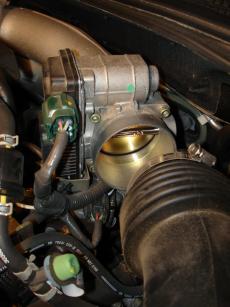

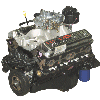
 Problem: Engine stalls when cold immediately after starting
Problem: Engine stalls when cold immediately after starting
